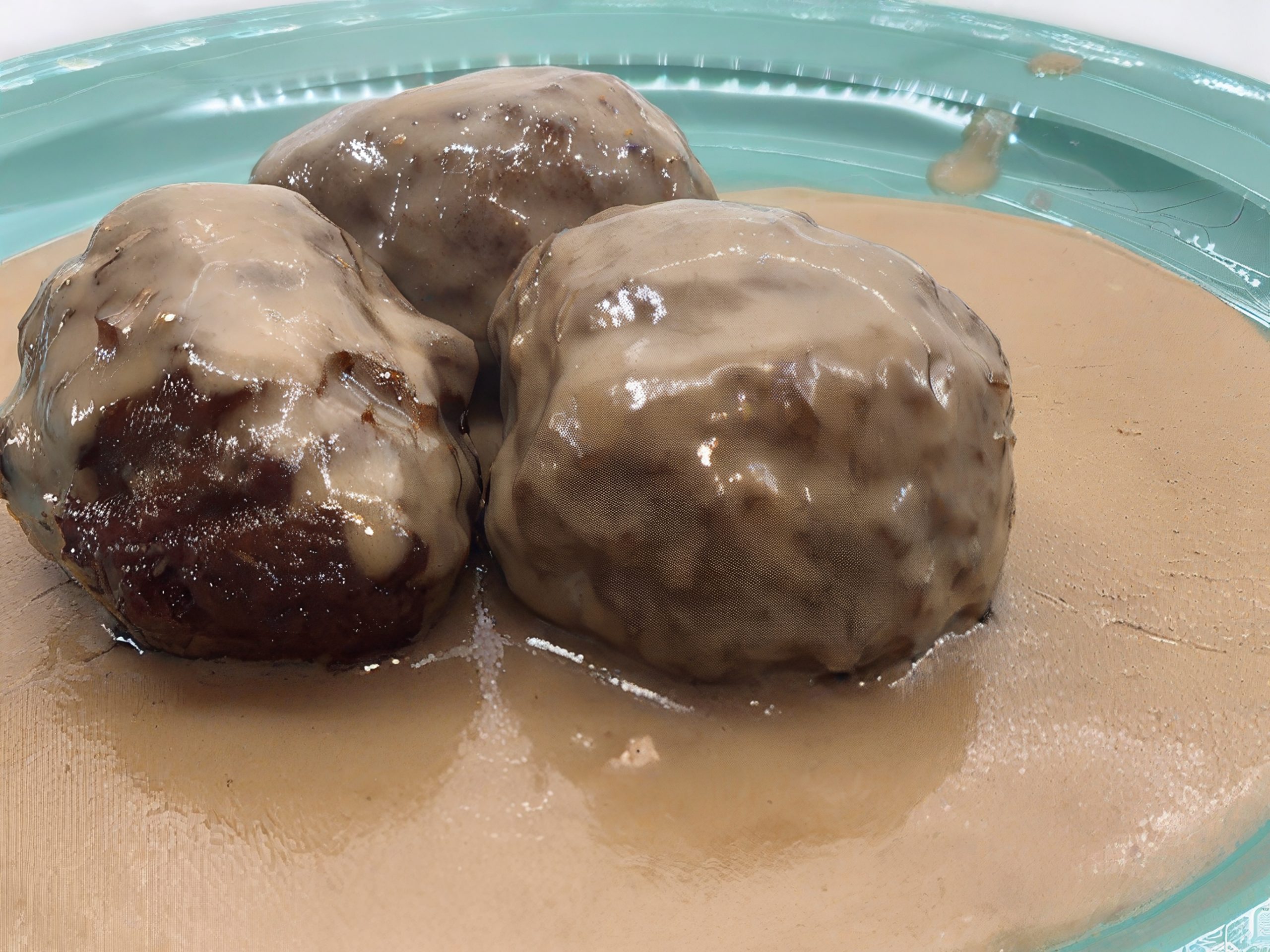
Worldwide Food Tour – Norway
Kjøttkaker, Norway’s beloved homemade meatballs, are a hearty, rustic dish that embodies Norwegian home cooking and family traditions. Unlike the smaller, delicate Swedish meatballs (köttbullar), Norwegian kjøttkaker are larger, coarser, and more rustic, served in a rich brown gravy (brun saus) with potatoes, lingonberry jam, and mushy peas.
This dish is a symbol of Norwegian heritage, often passed down through generations and enjoyed at both everyday family dinners and festive gatherings. Whether served in a cozy kitchen in Oslo or at a countryside farm, kjøttkaker remains one of Norway’s most cherished comfort foods.
The History: A Dish Rooted in Norwegian Traditions
The word “kjøttkaker” literally means “meat cakes”, reflecting the dish’s simple yet hearty nature. Meatballs have existed in various forms throughout Scandinavia and Europe for centuries, but Norway’s version has remained uniquely rustic, emphasizing bold flavors and a thick, satisfying texture.
Historically, Norwegian farmers relied on locally available meats, such as beef, pork, or a mix of both, making kjøttkaker an essential protein-rich meal during the cold winters. The dish became widespread in the 19th century, as Norwegian families cooked large batches, stretching their meat supply by adding flour or breadcrumbs to the mixture.
Today, kjøttkaker is still a staple of Norwegian cuisine, featured in both home kitchens and traditional restaurants, and often enjoyed on Sundays as part of a classic family meal.
What is Kjøttkaker?
Kjøttkaker are Norwegian-style meatballs, made with ground beef (sometimes mixed with pork or lamb), onions, and a blend of warm spices, pan-fried to a golden brown and then simmered in a rich, savory brown gravy (brun saus).
Essential Ingredients of Kjøttkaker:
- Ground Beef or Pork (or a mix) – The base of the meatballs, providing hearty flavor.
- Onion – Adds depth and natural sweetness.
- Milk & Breadcrumbs (or Flour) – Helps keep the meatballs tender while binding them together.
- Egg – Adds structure and moisture.
- Salt & Pepper – Essential seasoning for balanced flavor.
- Spices:
- Ground nutmeg and ginger (common in traditional recipes).
- Allspice (optional) – Adds a mild warmth, similar to Swedish meatballs.
The Brown Gravy (Brun Saus):
- Made with butter, flour, beef stock, and sometimes a splash of cream, the gravy is thick, rich, and comforting—perfect for coating the meatballs.
Tasting Notes: Hearty, Savory, and Deeply Satisfying
Kjøttkaker delivers a robust and comforting flavor, with a texture that is coarse yet tender.
- The meatballs are juicy, slightly firm, and well-seasoned, absorbing the flavors of the gravy.
- The gravy is thick and deeply savory, with a buttery richness that enhances every bite.
- The side dishes (potatoes, lingonberry jam, and peas) add balance, offering a mix of earthy, sweet, and fresh flavors.
This dish is the ultimate Norwegian comfort food, perfect for cold winter nights or a nostalgic family meal.
How Kjøttkaker is Served
Kjøttkaker is traditionally served as part of a classic Norwegian meal, typically alongside potatoes and vegetables.
Traditional Serving Style:
- Kjøttkaker (Norwegian Meatballs) – Pan-fried and simmered in brun saus (brown gravy).
- Boiled or Mashed Potatoes – A staple side dish, soaking up the rich sauce.
- Lingonberry Jam (Tyttebærsyltetøy) – A sweet, tart contrast to the savory meatballs.
- Stewed Peas or Root Vegetables – Common sides include mashed peas, carrots, or cabbage.
- Flatbrød (Norwegian Crispbread) (Optional) – A crunchy side often served in rural areas.
Many Norwegians also enjoy kjøttkaker as leftovers, reheated the next day for an even richer, more flavorful experience.
Beyond Norway: Kjøttkaker’s Scandinavian Cousins
While uniquely Norwegian, kjøttkaker shares similarities with other Scandinavian meatball dishes:
- Swedish Meatballs (Köttbullar): Smaller, smoother in texture, and served with creamier gravy.
- Danish Frikadeller: Flattened, pan-fried meat patties with a crispier texture.
- Finnish Lihapullat: Similar to Swedish köttbullar but often seasoned with allspice.
Despite these similarities, Norwegian kjøttkaker remains distinct for its larger size, rustic texture, and deep brown gravy.
Why Kjøttkaker is a Norwegian Classic
✔ Rich, Hearty, and Comforting – Perfect for cold weather and family meals.
✔ Traditional Yet Easy to Make – A staple of home cooking with simple ingredients.
✔ A Balance of Flavors – The savory meatballs, rich gravy, and sweet lingonberries create a perfect harmony.
✔ Deeply Rooted in Norwegian Culture – A dish enjoyed for centuries across generations.
Whether enjoyed in a traditional Norwegian home or at a cozy countryside inn, kjøttkaker is a dish that warms both the body and soul.